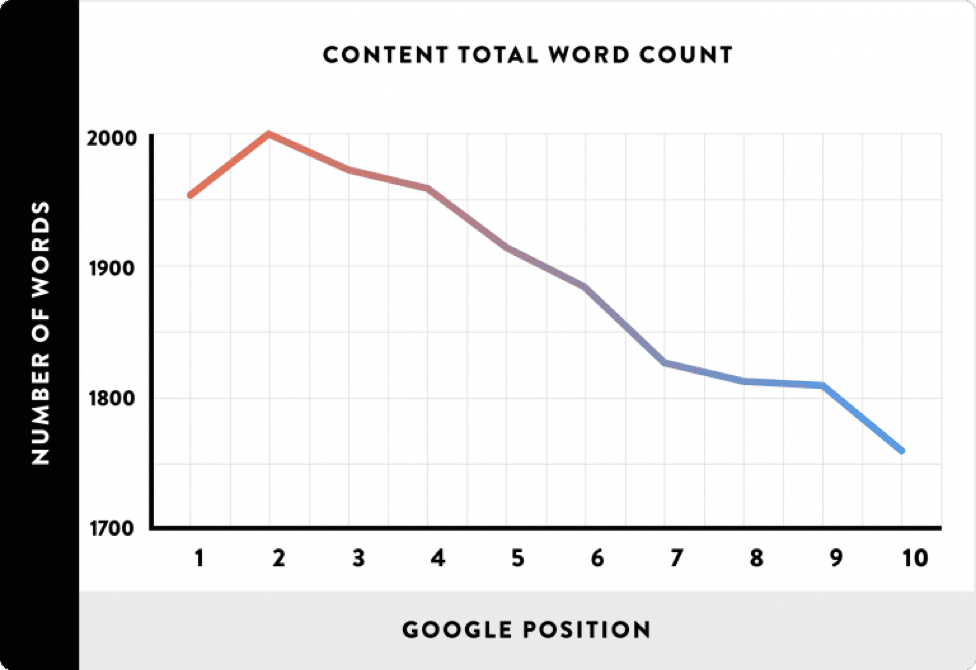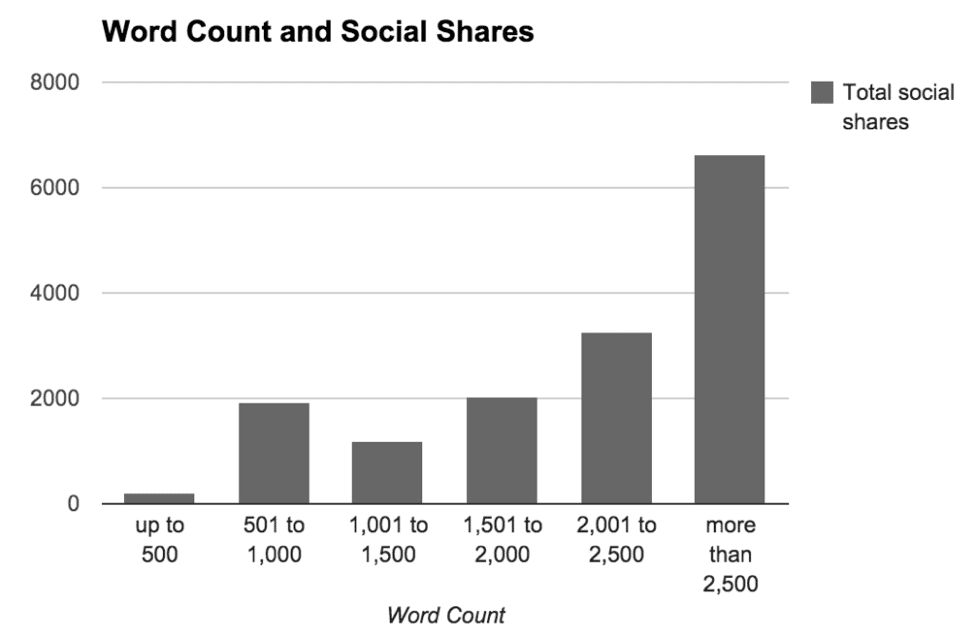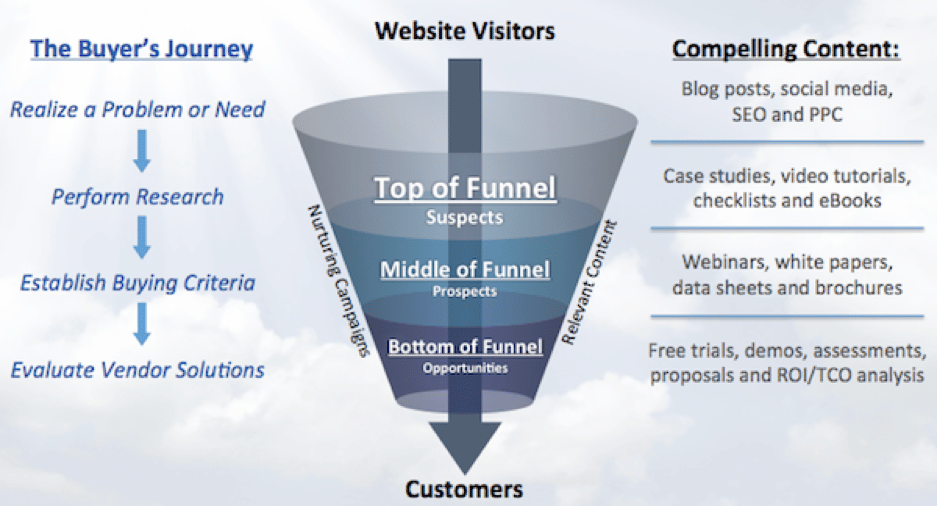The idea of having to write content that exceeds 1,000+ words – whether in the form of a blog post or a downloadable asset – can be daunting.
Initial thoughts that it’s just way too much work, no one is going to read it, and you want an easy work around with SEO are all common.
If you’re one of the many companies I’ve come across who have the same mindset, then you’re missing out on significant opportunities. More specifically, you aren’t aware of the benefits that long-form content can yield.
In this blog post, I’ll discuss why you should invest in long-form content (and even when short-term makes sense too!).
[FREE DOWNLOAD: 7 EPIC WAYS TO USE CONTENT MARKETING FOR LEAD GENERATION]
Why You Should Create Long-Form Content
Long have passed the days of just writing 200-600 word articles for rankings. With the algorithm update of Panda, the search landscape changed such that poorly written content was no longer finding good placement in SERPs.
Sure, you may find that your site is getting indexed, but that doesn’t mean that you’ll be able to outrank competitors who are developing better content or that have a higher domain authority.

Further, here are the clear advantages of having long-form content:
- Stand out from the noise. If you see that the majority of your competitors are pushing out content that’s under 600 words, then be the one to create better, high-quality and valuable content.
- More backlinks. Longer content attracts backlinks and will also deliver better SEO results such as organic traffic.
- Content repurposing. Let’s say you write a blog post that has more than 2,000 words. You now have the opportunity of turning that blog post into a downloadable guide, multiple social updates, an infographic, webinar, etc.
- Potential customers get about 70% of the way down the funnel before wanting to get in touch with a sales rep. That said, leverage long-form content to position your expertise and authority while giving website visitors a reason to stay on your site longer.
- Time on site increases, bounce rate decreases. Open up the opportunity to drive quality leads to content that shows how you can provide solutions to problems within your particular niche.
For example, BuzzSumo looked at 100 million articles and found that articles between 3,000-10,000 words long got twice the number of shares as content 0- 1,000 words long.

Tailor Content to the Buyer Journey
At every stage of your funnel, you should be pushing different content types to meet the needs of your target buyers.

Working off of a funnel that’s deliberate and aligned with the journey of your prospective buyers will help you decide where long and short-form content makes the most sense.
For instance, you may find that when suspects become prospects, they want content that’s more specific to how your company can help them. So instead of sending them a 50 page eBook, you’re better off providing a one-page data sheet that gets straight to the point on how your product/service will solve their challenges.
When to Consider Short-Form Content
Don’t discount the fact that short-form content should play an integral role within your overall content development/marketing strategy as well.
Here are a few instances where short-form content should be considered:
- You already have a name for yourself. Take Seth Godin, for example; he’s a public figure with a large following. Therefore, he can write shorter content pieces and still receive high engagement.
- The content is unique. This can range from short videos to infographics, memes, gifs, etc. But what makes the content engaging is the fact that it is visually appealing, backed by statistical research and tells a great story.
- A picture worth a thousand words. In some cases, having a single image (accompanied by a short description) that shows buyers how your product/service works is more important and easier to convey than writing out an entire 2,000+ word article.
Making Time to Write
No matter the size of your company, you have to find the right balance between when you should make time to write and when to hire or outsource.
If you decide to outsource, don’t settle for the cheapest writer there is out there. You want to find someone who has experience within your domain and can competently do the research needed to write in the voice of an expert.
Here are a few questions to ask yourself before deciding which route you should take:
- What is your budget?
- What is your end goal with your content pieces?
- Do you have a voice/tone guideline?
- How far in advance do you want to plan your content calendar?
- How often do you want new pieces of content published?
All of these questions are critical to figuring out which writer will be the best for the job and help you understand where you can carve out time to write as well.
More importantly, make sure you are involved with creating the content calendar and that you are aware of what’s to come. This will help you understand how many writers you may need to hire, how much you’ll have to budget towards content creation and the promotion of it, and so on.
[FREE DOWNLOAD: WINNING SALES WITH CONTENT MARKETING]
Ideas to Help Amplify Content Engagement
Investing in long-form content doesn’t just stop at the point of creation and publishing. You have to also think about how you will go about promoting your content pieces.
Here are a few ideas to help:
- Give your blog posts a boost. Consider boosting the posts on Facebook and ensuring that you target the right audience. If more of your customers are on LinkedIn, then sponsor your content pieces to specific buyer personas.
- Reach out to influencers. Simply identifying influencers within your industry and then reaching out to see if they’ll provide a relevant quote to go with your content piece will help expand your reach.
- Don’t stop sharing. Just because you shared out your new blog post or white paper once doesn’t mean you can’t continue to. So quote different parts of the same content piece and schedule out multiple social media updates.
- If you happen to mention an influencer or potential co-marketing partner within your content, utilize LinkedIn to let them know that you did.
Final Thoughts
No matter the type (e.g. webinars, eBooks, blog posts, white papers, guides, checklists, etc.) of content you choose to push out, know that when you make the investment in creating high-quality content pieces, positive results will soon follow.
Be fierce with finding the right avenues to align your content development/marketing efforts with business goals. Doing so will help you stay consistent with pushing out fresh content, stay ahead of the competition, and drive new leads and sales for your company.
Related Posts:





